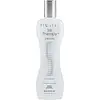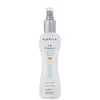What's inside
What's inside
 Key Ingredients
Key Ingredients

No key ingredients
 Benefits
Benefits

 Concerns
Concerns

 Ingredients Side-by-side
Ingredients Side-by-side

Cyclopentasiloxane
EmollientCyclotetrasiloxane
EmollientDimethiconol
EmollientCyclohexasiloxane
EmollientAlcohol Denat.
AntimicrobialC12-15 Alkyl Benzoate
AntimicrobialPhenoxyethanol
PreservativePanthenol
Skin ConditioningEthyl Ester Of Hydrolyzed Silk
Skin ConditioningParfum
MaskingBenzyl Benzoate
AntimicrobialHexyl Cinnamal
PerfumingLinalool
PerfumingAlpha-Isomethyl Ionone
PerfumingCitronellol
PerfumingGeraniol
PerfumingHydroxycitronellol
PerfumingButylphenyl Methylpropional
PerfumingEugenol
PerfumingCyclopentasiloxane, Cyclotetrasiloxane, Dimethiconol, Cyclohexasiloxane, Alcohol Denat., C12-15 Alkyl Benzoate, Phenoxyethanol, Panthenol, Ethyl Ester Of Hydrolyzed Silk, Parfum, Benzyl Benzoate, Hexyl Cinnamal, Linalool, Alpha-Isomethyl Ionone, Citronellol, Geraniol, Hydroxycitronellol, Butylphenyl Methylpropional, Eugenol
Water
Skin ConditioningMagnesium Sulfate
Isoceteth-20
EmulsifyingMacrocystis Pyrifera Extract
Skin ConditioningAlgae Extract
EmollientCitric Acid
BufferingHydrolyzed Keratin
HumectantPanthenol
Skin ConditioningHydrolyzed Silk
HumectantAnthemis Nobilis Flower Extract
MaskingMentha Piperita Leaf Extract
Skin ConditioningLavandula Angustifolia Extract
Skin ConditioningSalvia Sclarea Extract
AntiseborrhoeicTocopheryl Acetate
AntioxidantRetinyl Palmitate
Skin ConditioningParfum
MaskingBenzyl Benzoate
AntimicrobialHexyl Cinnamal
PerfumingLinalool
PerfumingAlpha-Isomethyl Ionone
PerfumingCitronellol
PerfumingGeraniol
PerfumingSymphytum Officinale Leaf Extract
Skin ConditioningHelianthus Annuus Seed Oil
EmollientBHT
AntioxidantPentylene Glycol
Skin ConditioningEthylhexylglycerin
Skin ConditioningCaprylyl Glycol
EmollientPhenoxyethanol
PreservativePotassium Sorbate
PreservativePropylene Glycol
HumectantPropanediol
SolventHexylene Glycol
EmulsifyingButylphenyl Methylpropional
PerfumingHydroxycitronellal
PerfumingWater, Magnesium Sulfate, Isoceteth-20, Macrocystis Pyrifera Extract, Algae Extract, Citric Acid, Hydrolyzed Keratin, Panthenol, Hydrolyzed Silk, Anthemis Nobilis Flower Extract, Mentha Piperita Leaf Extract, Lavandula Angustifolia Extract, Salvia Sclarea Extract, Tocopheryl Acetate, Retinyl Palmitate, Parfum, Benzyl Benzoate, Hexyl Cinnamal, Linalool, Alpha-Isomethyl Ionone, Citronellol, Geraniol, Symphytum Officinale Leaf Extract, Helianthus Annuus Seed Oil, BHT, Pentylene Glycol, Ethylhexylglycerin, Caprylyl Glycol, Phenoxyethanol, Potassium Sorbate, Propylene Glycol, Propanediol, Hexylene Glycol, Butylphenyl Methylpropional, Hydroxycitronellal
Ingredients Explained
These ingredients are found in both products.
Ingredients higher up in an ingredient list are typically present in a larger amount.
Alpha-Isomethyl Ionone is a fragrance. It can be synthetically created or naturally occurring.
The scent of Alpha-Isomethyl Ionone is described as "flowery" but can also be "woody".
Naturally occurring Alpha-Isomethyl Ionone may be found in Saccharomyces cerevisiae, or the yeast used to make wine and bread.
The term 'fragrance' is not regulated in many countries. In many cases, it is up to the brand to define this term. For instance, many brands choose to label themselves as "fragrance-free" because they are not using synthetic fragrances. However, their products may still contain ingredients such as essential oils that are considered a fragrance.
Learn more about Alpha-Isomethyl IononeBenzyl Benzoate is usually created from the condensation of benzoic acid and benzyl alcohol. It is used as a preservative, solvent, and has a floral/balsamic scent in large amounts.
As a preservative, Benzyl Benzoate works against bacteria and fungus. It is often used to treat scabies and lice in medicine.
Solvents are used to keep ingredients together in a product. They can help dissolve ingredients to stable bases or help evenly distribute ingredients throughout the product.
Due to its fragrance, Benzyl Benzoate can be sensitizing and may cause contact dermatitis. It is a known EU allergen. We recommend speaking with a professional if you have any concerns.
Benzyl Benzoate can be naturally found in cranberries and peaches.
Learn more about Benzyl BenzoateButylphenyl Methylpropional is a synthetic fragrance. You might know it as "lilial". The scent of this ingredient is floral-like and similar to the scent of lily flowers.
In March of 2022, the EU banned this ingredient in both rinse-off and leave-on products. This is because research found Butylphenyl Methylpropional to disrupt fertility in rats.
This ingredient is also a known EU allergen, meaning it is likely to cause an allergic reaction. Irritated skin can be damaging.
We always recommend speaking with a professional if you have any concerns or questions about this ingredient.
Learn more about Butylphenyl MethylpropionalCitronellol is used to add fragrance/parfum to a product. It is often derived from plants such as roses. In fact, it can be found in many essential oils including geranium, lavender, neroli, and more. The scent of Citronellol is often described as "fresh, grassy, and citrus-like".
Since the Citronellol molecule is already unstable, Citronellol becomes irritating on the skin when exposed to air.
Citronellol is a modified terpene. Terpenes are unsaturated hydrocarbons found in plants. They make up the primary part of essential oils.
Citronellol is not able to be absorbed into deeper layers of the skin. It has low permeability,
Citronellol is also a natural insect repellent.
Learn more about CitronellolGeraniol is used to add fragrance/parfum to a product. It is the main component of citronellol. It is a monoterpenoid and an alcohol.
Monoterpenes are naturally found in many parts of different plants.
Geraniol can be found in many essential oils including Rose Oil and Citronella Oil. The scent of Geraniol is often described as "rose-like". Many foods also contain Geraniol for fruit flavoring.
Geraniol can irritate the skin when exposed to air. However, irritation depends on the ability of geraniol to penetrate into the skin. In general, geraniol is not able to penetrate skin easily.
Geraniol is colorless and has low water-solubility. However, it is soluble in common organic solvents.
Like citronellol, it is a natural insect repellent.
2,6-Octadien-1-ol, 3,7-dimethyl-, (2E)-
Learn more about GeraniolHexyl Cinnamal is a fragrance ingredient with a similar scent to jasmine. It can be naturally found in chamomile essential oil.
This ingredient is a known EU allergen and may sensitize the skin. The EU requires this ingredient to be listed separately on an ingredients list.
Hexyl Cinnamal is not water soluble but is soluble in oils.
Learn more about Hexyl CinnamalLinalool is a fragrance and helps add scent to products. It's derived from common plants such as cinnamon, mint, citrus, and lavender.
Like Limonene, this ingredient oxidizes when exposed to air. Oxidized linalool can cause allergies and skin sensitivity.
This ingredient has a scent that is floral, spicy tropical, and citrus-like.
Learn more about LinaloolPanthenol is a common ingredient that helps hydrate and soothe the skin. It is found naturally in our skin and hair.
There are two forms of panthenol: D and L.
D-panthenol is also known as dexpanthenol. Most cosmetics use dexpanthenol or a mixture of D and L-panthenol.
Panthenol is famous due to its ability to go deeper into the skin's layers. Using this ingredient has numerous pros (and no cons):
Like hyaluronic acid, panthenol is a humectant. Humectants are able to bind and hold large amounts of water to keep skin hydrated.
This ingredient works well for wound healing. It works by increasing tissue in the wound and helps close open wounds.
Once oxidized, panthenol converts to pantothenic acid. Panthothenic acid is found in all living cells.
This ingredient is also referred to as pro-vitamin B5.
Learn more about PanthenolParfum is a catch-all term for an ingredient or more that is used to give a scent to products.
Also called "fragrance", this ingredient can be a blend of hundreds of chemicals or plant oils. This means every product with "fragrance" or "parfum" in the ingredients list is a different mixture.
For instance, Habanolide is a proprietary trade name for a specific aroma chemical. When used as a fragrance ingredient in cosmetics, most aroma chemicals fall under the broad labeling category of “FRAGRANCE” or “PARFUM” according to EU and US regulations.
The term 'parfum' or 'fragrance' is not regulated in many countries. In many cases, it is up to the brand to define this term.
For instance, many brands choose to label themselves as "fragrance-free" because they are not using synthetic fragrances. However, their products may still contain ingredients such as essential oils that are considered a fragrance by INCI standards.
One example is Calendula flower extract. Calendula is an essential oil that still imparts a scent or 'fragrance'.
Depending on the blend, the ingredients in the mixture can cause allergies and sensitivities on the skin. Some ingredients that are known EU allergens include linalool and citronellol.
Parfum can also be used to mask or cover an unpleasant scent.
The bottom line is: not all fragrances/parfum/ingredients are created equally. If you are worried about fragrances, we recommend taking a closer look at an ingredient. And of course, we always recommend speaking with a professional.
Learn more about ParfumPhenoxyethanol is a preservative that has germicide, antimicrobial, and aromatic properties. Studies show that phenoxyethanol can prevent microbial growth. By itself, it has a scent that is similar to that of a rose.
It's often used in formulations along with Caprylyl Glycol to preserve the shelf life of products.